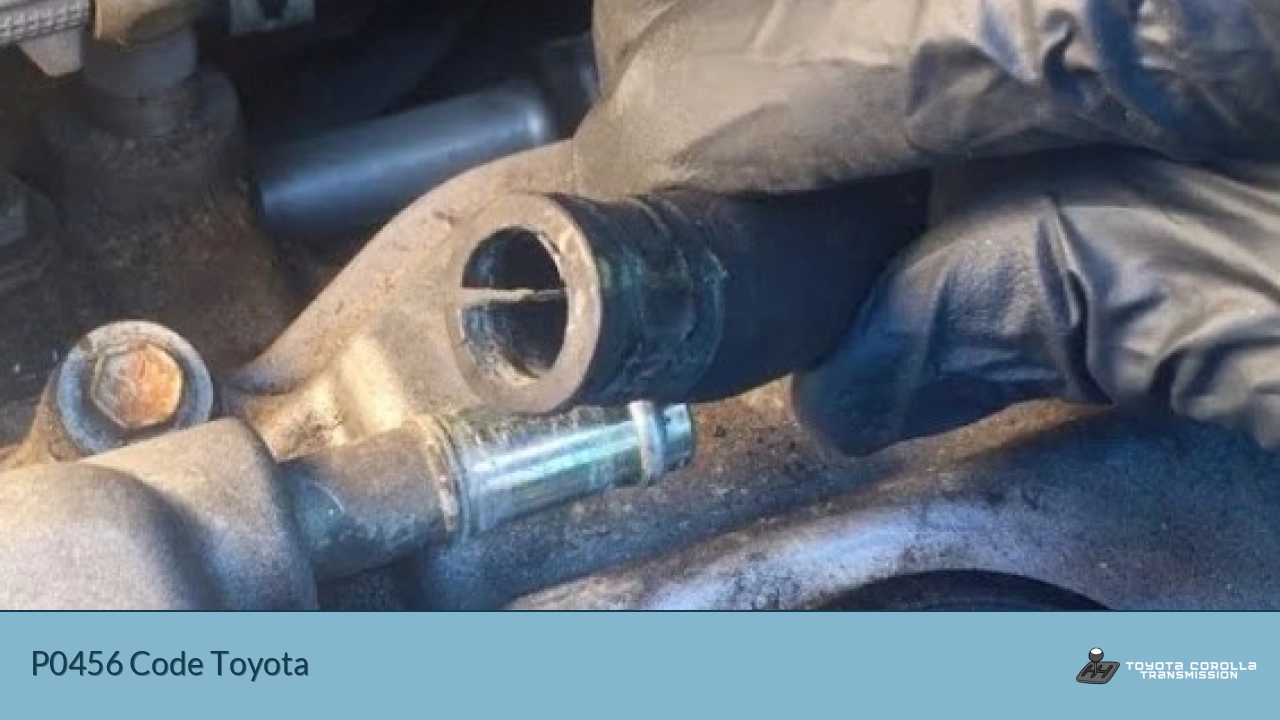The P0456 code in Toyota vehicles is a common issue that many owners encounter. This diagnostic trouble code (DTC) indicates a very small leak in the Evaporative Emission Control (EVAP) system. While it may seem minor, addressing this problem is crucial for maintaining your vehicle’s performance and complying with emissions regulations.
| Aspect | Description | Severity |
|---|---|---|
| Definition | EVAP Control System Leak Detected (Very Small Leak) | Low |
| Leak Size | Approximately 0.020 inches | Very Small |
| System Affected | Evaporative Emission Control (EVAP) | Emissions |
Understanding the EVAP System
The EVAP system is designed to prevent fuel vapors from escaping into the atmosphere. It captures these vapors and redirects them back to the engine for combustion. When the system detects a leak, even a tiny one, it triggers the P0456 code.
Common Causes of P0456
- Loose or Faulty Gas Cap: Often, the simplest solution is to check and tighten the gas cap. A loose or damaged cap can easily trigger this code.
- Damaged EVAP Hoses: Over time, the rubber hoses in the EVAP system can crack or deteriorate, causing small leaks.
- Faulty Purge Valve: The purge valve controls the flow of fuel vapors. If it’s not functioning correctly, it can cause the P0456 code.
- Charcoal Canister Issues: The charcoal canister, which stores fuel vapors, can develop cracks or become saturated over time.
- Fuel Tank Pressure Sensor Malfunction: This sensor monitors pressure in the fuel system and can trigger the code if it’s not reading correctly.
Diagnosing the Problem
Diagnosing a P0456 code requires a systematic approach:
- Check the Gas Cap: Always start with the simplest solution. Ensure the gas cap is tight and in good condition.
- Visual Inspection: Look for any visible cracks or damage in the EVAP system hoses and components.
- Smoke Test: Professional mechanics often use a smoke machine to detect small leaks in the EVAP system.
- Scanner Data: Use an OBD-II scanner to check for any additional codes and monitor EVAP system data.
Fixing the P0456 Code
The repair process depends on the root cause:
- Replace the Gas Cap: If damaged or worn, a new gas cap can often resolve the issue.
- Repair or Replace Hoses: Any cracked or damaged hoses in the EVAP system should be replaced.
- Clean or Replace the Purge Valve: Sometimes, cleaning the purge valve can fix the problem. If not, replacement may be necessary.
- Replace the Charcoal Canister: If the canister is damaged or saturated, it will need replacement.
- Check Wiring and Connections: Ensure all electrical connections in the EVAP system are secure and free from corrosion.
DIY vs. Professional Repair
While some aspects of diagnosing and fixing a P0456 code can be done at home, professional assistance is often recommended. The EVAP system is complex, and improper repairs can lead to more significant issues.
Preventing Future Occurrences
To avoid future P0456 codes:
- Regularly inspect your gas cap and EVAP system components
- Avoid overfilling your gas tank
- Follow your Toyota’s maintenance schedule
Impact on Vehicle Performance
While a P0456 code doesn’t usually affect drivability, it can lead to:
- Slightly reduced fuel efficiency
- Failed emissions tests
- Potential for more severe EVAP system damage if left unaddressed
FAQs
What does the P0456 code mean for my Toyota?
It indicates a very small leak in the EVAP system, often due to a loose gas cap or minor component issue.
Can I drive with a P0456 code?
Yes, but it’s best to address it promptly to prevent potential fuel efficiency loss and emissions issues.
How much does it cost to fix a P0456 code?
Costs vary widely, from $20 for a new gas cap to several hundred dollars for more complex repairs.
Will a P0456 code clear itself?
Sometimes, but it usually requires fixing the underlying issue for the code to clear permanently.
How often should I check my gas cap?
It’s good practice to check your gas cap for proper tightness every time you fill up your tank.

